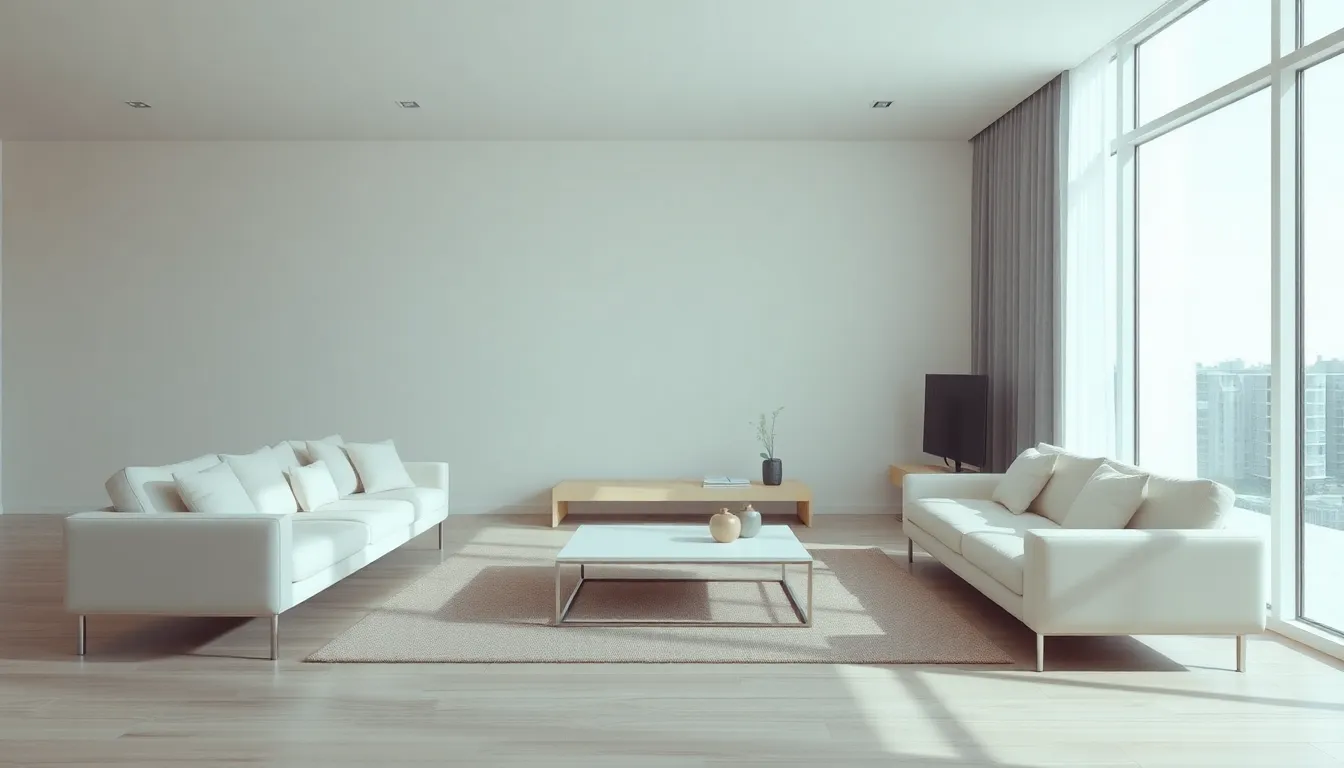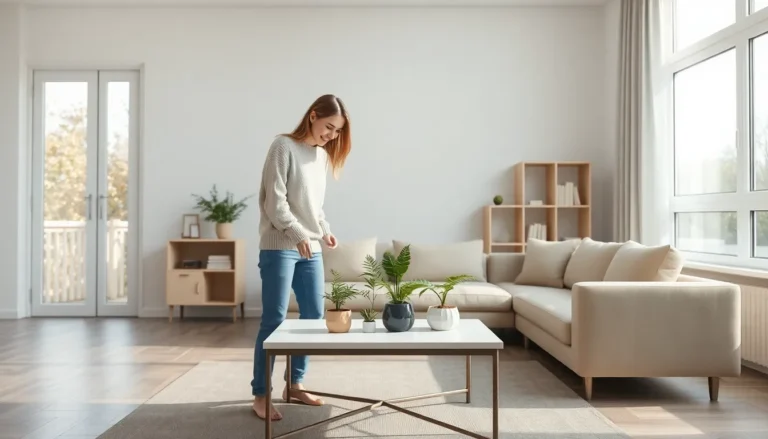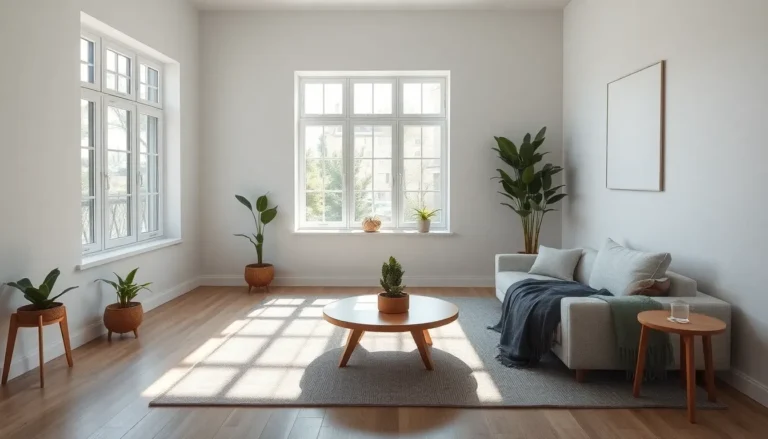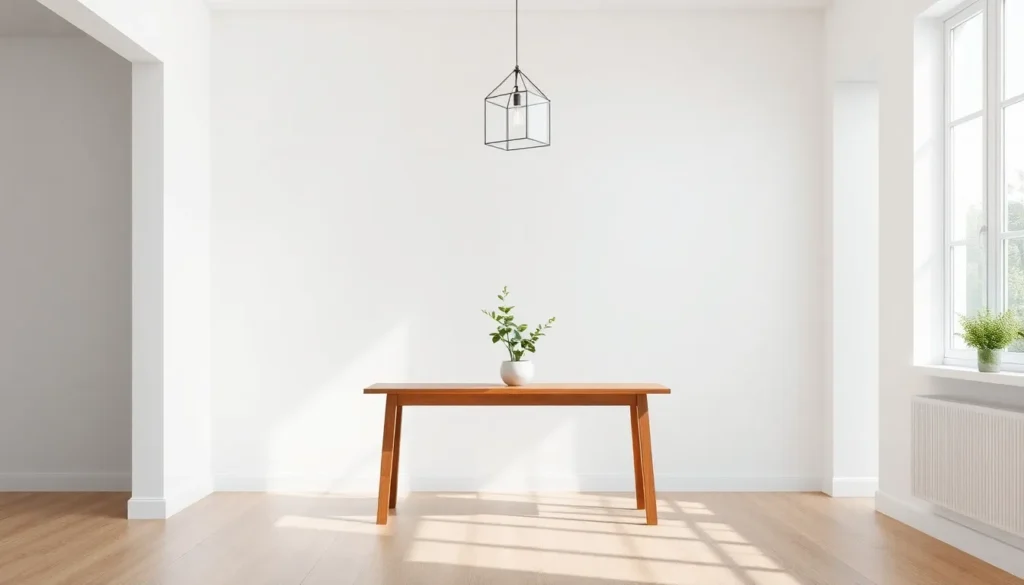Table of Contents
ToggleIn a world overflowing with clutter, design minimalism swoops in like a superhero armed with a simple mantra: less is more. It champions the idea that beauty lies in simplicity, offering a breath of fresh air in spaces that feel more like chaotic jungles than serene sanctuaries. With clean lines and uncluttered aesthetics, minimalism invites tranquility while making a bold statement.
Understanding Design Minimalism
Design minimalism revolves around the idea of simplicity, emphasizing essential elements over excess. It showcases how reducing visual clutter leads to more impactful designs.
Definition of Design Minimalism
Design minimalism refers to a style that prioritizes simplicity and functionality. By stripping away unnecessary elements, it highlights core aspects of a design. This approach embraces clean lines and monochromatic palettes, focusing on what truly matters in the visual experience. Spaces designed with minimalism often evoke feelings of openness and clarity, allowing the viewer to engage fully without distractions. A minimalist design facilitates an effortless interaction with its environment.
Importance of Design Minimalism
Design minimalism plays a crucial role in reducing visual noise, enhancing focus, and improving user experience. It promotes a sense of calm that stands in stark contrast to chaotic environments. By concentrating on essential components, designers can craft memorable experiences that resonate deeply with users. This style drives efficiency, making navigation intuitive and straightforward. Additionally, minimalism encourages sustainability by promoting the idea of ‘less,’ leading to more thoughtful consumer choices and design practices.
Key Principles of Design Minimalism

Design minimalism revolves around core principles that enhance clarity and functionality. It cultivates an aesthetic that eliminates excess, focusing on what matters most.
Simplicity in Form
Simplicity in form represents the foundation of minimalism. This principle emphasizes clean, geometric shapes that create visual harmony. Designers often use unembellished structures to emphasize purpose. With fewer distractions, viewers can appreciate the essential elements. A focus on straightforward design fosters an intuitive user experience. Deliberate choices in materials and colors enhance this effect, promoting cohesive aesthetics.
Effective Use of Space
Effective use of space plays a critical role in minimalism. Open areas enhance feelings of freedom and tranquility. By employing negative space, designers guide the viewer’s attention to focal points. Strategic placement of elements minimizes clutter and promotes usability. Natural light often complements this approach, illuminating and expanding perceptions of space. Thoughtful layouts create balance, allowing each component to breathe while contributing to the overall design.
Benefits of Embracing Design Minimalism
Design minimalism brings several benefits that enhance both aesthetics and functionality. It fosters an environment where essential elements shine.
Enhanced User Experience
Design minimalism significantly enhances user experience. By reducing clutter, it simplifies navigation and interaction. Users engage more effortlessly with designs that prioritize essential components. The streamlined interfaces allow for clear information delivery, creating a seamless flow that caters to user needs. Visitors often find themselves more satisfied when faced with an intuitive layout. Furthermore, accessibility increases as minimal designs accommodate diverse user preferences, enhancing overall satisfaction.
Increased Focus and Clarity
In minimalistic designs, focus and clarity become paramount. This approach eliminates distractions, encouraging users to concentrate on core messages and functions. Clear typography and ample whitespace guide attention, fostering a sense of calm. Users appreciate a design that communicates effectively without overwhelming stimuli. Research shows that simplified layouts can improve comprehension and retention. Clarity becomes a natural byproduct, leading to productive interactions and reduced cognitive load.
Examples of Design Minimalism
Design minimalism manifests clearly through various iconic pieces and across different sectors, showcasing its versatile application and impact.
Iconic Minimalist Designs
Examples of iconic minimalist designs include the Apple iPhone, renowned for its sleek aesthetics and intuitive usability. The Bauhaus movement also encapsulates minimalism with its focus on functional art. Another notable instance is the work of architect Tadao Ando, who uses concrete and natural light to create serene spaces. The Muji brand exemplifies minimalism through its unbranded, functional products that emphasize simplicity and efficiency. Lastly, Mies van der Rohe’s quote “less is more” epitomizes this design philosophy, influencing numerous architects and designers globally.
Minimalism in Different Sectors
Design minimalism appears in various sectors, including technology, fashion, and interior design. In technology, minimalist user interfaces enhance user experience through uncluttered layouts, like those seen in Google’s homepage. Fashion brands such as COS and Acne Studios prioritize clean lines, neutral colors, and timeless silhouettes, promoting sustainable wardrobe choices. Interior design highlights minimalist concepts by employing open floor plans, natural materials, and functional furniture that maximizes space and light. The automotive industry also embraces minimalism, with vehicles featuring streamlined designs and straightforward dashboards that prioritize driver comfort and efficiency.
Design minimalism stands as a powerful approach that champions simplicity and functionality. By stripping away the unnecessary it allows essential elements to shine. This focus not only creates aesthetically pleasing environments but also enhances user experiences across various fields.
As designers continue to embrace minimalism they foster clarity and tranquility in their creations. The principles of clean lines and effective use of space contribute to a more intuitive and engaging interaction. Ultimately design minimalism isn’t just a trend; it’s a lasting philosophy that resonates with users and promotes sustainable choices.







